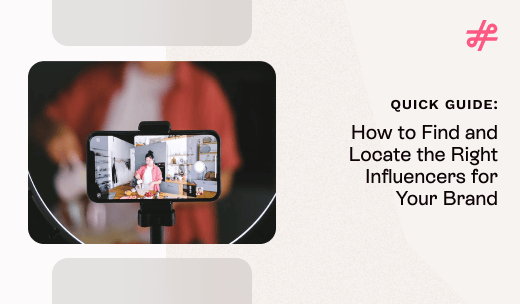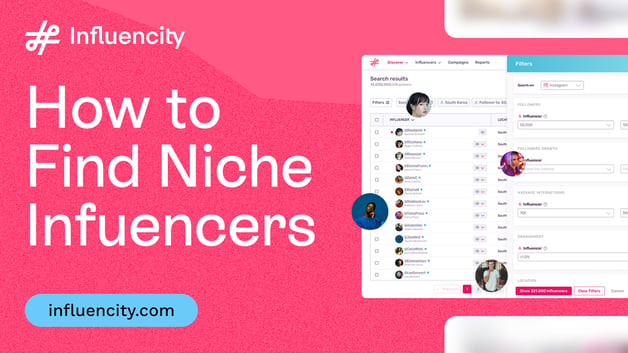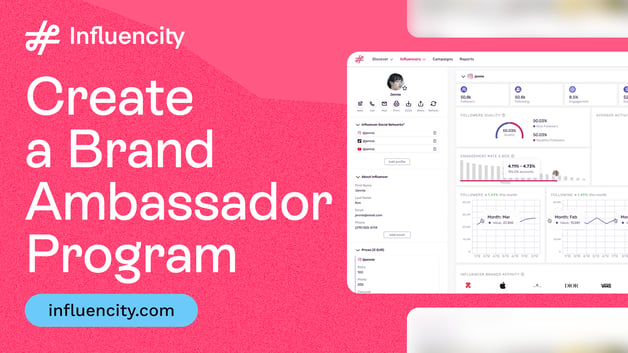How to Set a Smarter Influencer Campaign Budget
Setting a budget is not about picking a number that sounds good. It’s about building a budget that’s grounded in your goals and flexible enough to adjust along the way.
Start by getting clear on what you want to achieve.
Are you trying to increase sales? Build awareness? Get more engagement?

Your objectives should shape how you spend. If conversions are the priority, micro influencers or affiliate-driven models are often the best approaches. If reach is the goal, it might make sense to invest in creators with larger followings or splashier content.
It’s about creating a clear, measurable plan that aligns with your campaign goals and leaves room to adapt.
Here’s how to approach it:
1. Start with your campaign objectives
Are you trying to drive conversions? Grow brand awareness? Boost engagement? Your budget should reflect those priorities.
- For performance-focused campaigns, you might lean toward micro or affiliate-based partnerships.
- For awareness, it could make sense to invest in higher-reach influencers or splashier content.
Tip: A common beginner mistake is not being crystal clear about your goal and how to achieve it. For example, assuming sales will follow if 100 micro influencers talk about your product. That only works if your campaign is set up for conversions.
If you skip the tracking link or forget to include a clear call to action, you’ll have no way to measure performance and no way to tell if your influencer content actually drove results.
Be honest about your goal. If you're aiming for awareness, engagement and impressions might be enough. But in that case, you may achieve that higher reach. But if you're aiming for conversions, you need the right mechanics in place: a trackable link, a strong CTA, and the right format (like a Story with swipe-up or a product-tagged post). Otherwise, you’re just generating buzz—not revenue.
And that’s not performance marketing. That’s branding.
2. Get Clear on How You’ll Pay Influencers
Before you reach out to creators, decide how you want to structure payments. Will you offer a flat fee? Pay based on results? Set up an affiliate arrangement?
Each option works—it just depends on your goals and how closely you plan to track performance:
- Flat fees are straightforward and easy to budget for.
- Performance-based payments align spend with outcomes like sales or clicks.
- Affiliate deals can scale cost-effectively, but only if you have solid tracking in place.
The key is to choose a structure that makes sense for your campaign and gives you clear visibility into what you’re getting in return.
3. Plan for content production (not just the post)
High-performing content often requires more than a ring light and a phone. If your campaign calls for elevated visuals, product staging, or editing, build that into the budget from the start.
And don’t forget: creator content can be repurposed into ads or used in owned channels, so think of this spend as an investment, not a cost center.
Tip: Being a good steward of your marketing budget means knowing where to cut costs without cutting impact.
Can you skip a full-blown photo shoot by repurposing influencer content?
Could you reduce internal content production time and costs by repurposing influencer content for ads, email, or lifecycle marketing?
Sometimes the smartest spend is simply making more of what you already have.
4. Include a line item for paid amplification
If you plan to boost influencer posts on social media, add that spending to your campaign budget, not as an afterthought but as a strategic piece of your distribution plan.

A well-placed $500 behind a top-performing Reel can often outperform a second influencer partnership. But you won’t know unless you’ve planned and tracked for both.
Budget Tracking and Allocation Strategies to Maximize ROI
Once your budget is set, the real challenge begins: figuring out how to spend it in a way that delivers results. Smart allocation is what turns a good campaign into a great one, and what helps you get more from the same dollars next time around.
.jpg?width=700&height=460&name=pexels-mikhail-nilov-6592702%20(1).jpg)
Here are four proven ways to stretch your influencer marketing budget further:
1. Test small, scale what works
Start with a few influencers across different tiers, styles, niches, and platforms. Track performance closely, then double down on the partnerships that deliver. Always be testing and learning.
This approach keeps risk low and lets data, not assumptions, drive your spend.
2. Mix influencer tiers to balance reach and engagement
- Macro influencers give you reach and visibility
- Micro and nano influencers bring niche audiences and often stronger engagement
Combining the two can help you hit multiple goals (like awareness and conversions) without overspending in one area.
3. Use predictive tools to choose better influencers
Don’t rely on follower count or gut instinct. Platforms like Influencity can help forecast likely ROI based on past performance, engagement trends, and audience quality before you sign a contract.

That means fewer surprises and smarter upfront decisions.
4. Monitor cost per engagement (CPE) and return on ad spend (ROAS)
Tracking metrics like CPE and ROAS helps you understand not just what looks good, but what actually performs.
- Are you paying $1 per like or $10?
- Did that boosted post generate more sales than it cost to run?
Knowing these numbers, you can shift your budget toward the most efficient levers and confidently prove, and improve, campaign value.
Where Budget Tracking Goes Wrong (and How to Get It Right)
Even seasoned veterans can fall into budget traps, especially when campaigns move fast or involve multiple partners. Here are some of the most common mistakes we see, along with simple ways to avoid them:

Overlooking hidden costs
It’s easy to track influencer fees. But what about rush shipping? Props for a product shoot? Video editing?
These costs add up and if you’re not tracking them, your actual spend could be way over budget.
Fix: Build in a “miscellaneous” line from the start, and log every invoice as it comes in. Don’t wait until the campaign wraps.
Chasing follower count over performance
Bigger isn’t always better. Some large creators charge premium rates but deliver lower engagement or poor audience alignment.
Fix: Evaluate influencers based on cost per engagement, content quality, and audience match, not just vanity metrics.
Skipping UTM or affiliate tracking
Without proper links in place, it’s hard to tie influencer activity to actual results. That means you can’t measure what’s working or make a case for budget increases later.

Fix: Set up unique UTM links or affiliate codes for every creator. Influencity makes it easy to do this at scale.
Not benchmarking against past campaigns
If you don’t compare results over time, it’s tough to know whether you’re improving, or repeating the same mistakes.
Fix: Track campaign spend and ROI across multiple time periods or product launches. Look for trends, not just one-off wins. Benchmarks should not only be used against the previous period but also against the same period in previous years to detect seasonal differences.
A little structure goes a long way here. Consistent budget tracking habits help you avoid costly surprises, improve forecasting, and make every campaign stronger than the last.
Best Budget Tracking Tools for Influencer Campaigns
Best for: Measuring traffic, conversions, and performance-based payouts
Pairing UTM links with tools like Google Analytics lets you see what traffic came from where. If you’re running affiliate programs, platforms like ShareASale or manual tracking through Influencity work well for commissions and performance bonuses.
Paid Media Dashboards
Best for: Tracking spend on boosted influencer content
If you’re amplifying influencer posts via Meta Ads, TikTok Ads, or YouTube, keep a close eye on performance through their native dashboards or track everything in one place using Influencity’s ad spend reporting.
Tip: Choose a tool that fits your workflow. It doesn’t have to be the fanciest option. The best tool is the one your team is comfortable using consistently.
Conclusion: Budget Tracking Isn’t Extra—It’s Essential
You don’t need a massive budget to run a successful influencer campaign.
But you do need a clear view of where your money’s going—and what you’re getting in return.
When you’re tracking your budget closely, you’re not guessing. You’re making smarter choices: which influencers to keep working with, where to rein in costs, and how to back up your results when it’s time to ask for more budget.
It’s not just about balancing the books. It’s how you build stronger campaigns, one decision at a time.
The upside? With the right tools in place, it’s easier than ever to measure what matters and keep your spend working harder.
Ready to make your influencer budget work harder?
Try Influencity’s budget tracking and ROI analytics tools to gain real-time insights into campaign spending and performance. This will allow you to scale what works and stop wasting money on what doesn’t.
Tags:
Budget Tracking



-1.png?width=600&height=450&name=White%20%26%20Green%20Modern%20Bar%20Chart%20Graph%20(35)-1.png)






















%20and%20How%20Can%20They%20Benefit%20Your%20Brand%20article.jpg?length=628&name=What%20Are%20Key%20Opinion%20Leaders%20(KOL)%20and%20How%20Can%20They%20Benefit%20Your%20Brand%20article.jpg)








